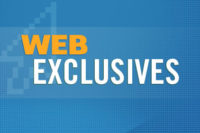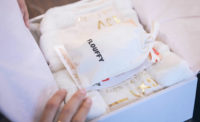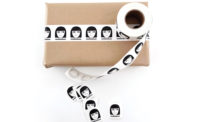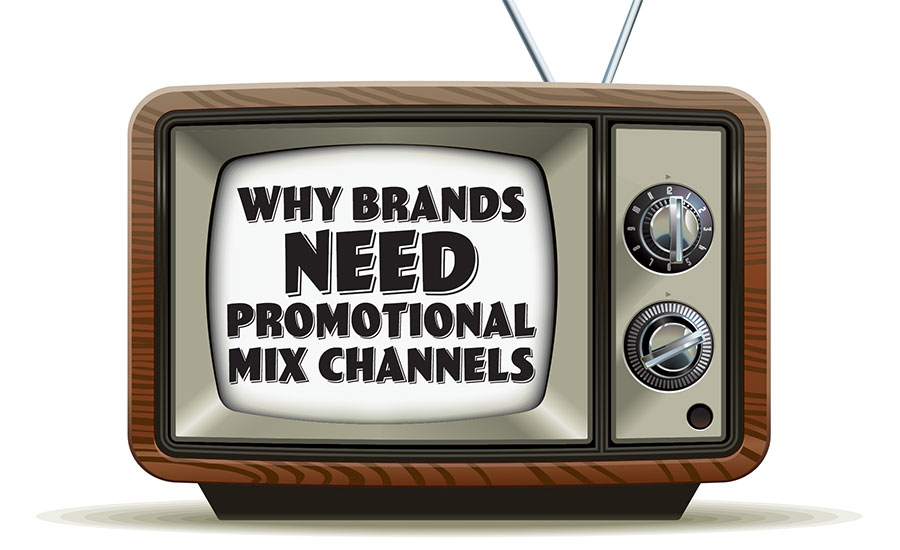Brand Packaging: Packaging Redesign
Why Brands Need Promotional Mix Channels
Five Ways to Connect with Consumers


Having trouble reading? Download a complementary pdf version of the graphic here


CPG brands can be promoted in dozens of ways from the traditional television commercial, outdoor media such as bus ads, to event branding and social media. Brands even have the option of putting a sandwich board on a dog that is walked around the city. Fortunately, all of the ways to communicate with your target market can be categorized into five main channels called the “Promotional Mix.” This is the blend of promotional variables and the optimal way of allocating budgets for the different elements within the promotional mix to achieve best marketing results. Each channel has variables, such as bandwidth, the length of time or space to deliver the message; control, your influence in delivering the message; believability, how likely a consumer is to trust the information; reach, how widely the message is delivered; and price, the expense in time and dollars to deliver the message. Whatever combination fits your need, the purpose remains the same: organizing and prioritizing the use of the Promotional Mix to get the best results from your available resources.
It’s recommended brand owners implement a five-part Promotional Mix that combines publicity, website, social media, advertising and personal selling.
1) PUBLICITY
Publicity, which in marketing context means media coverage, is a powerful Promotional Mix channel with many pros and a few cons.
Brand Publicity Pros
Nothing outsells good media coverage. Its massive audiences and storytelling format are two big pluses. Consumers actively listen, and it’s inexpensive. Add the bragging rights of third-parties relaying positive attributes about your brand and the distinct possibility that most of your competitors aren’t getting much coverage, and you have arguably the most powerful promotional channel on the planet.
It’s surprising how few brand owners have fallen short on getting media coverage for their CPG products. When you study the history of iconic, profitable brands, you’ll almost always find media coverage played an integral role in their success.
Brand Publicity Cons
Media coverage does have cons. It cannot be scheduled and it is not possible to have absolute control over the message. But that’s OK. Common sense will tell you, if a media story about your brand has popped up in key markets all year long, they would surely impact year-end numbers.
2) WEBSITES
Websites are the most dynamic Promotional Mix channel. They can be as simple as a brochure or as complex as an online store.
Brand Website Pros
Websites have many strong points. They provide plenty of bandwidth to tell your story. You own your brand’s site, so you get to tell your brand story precisely how you wish, limited only by creativity and technical skill. Another positive is their low cost. In many cases, you’ll pay less for a globally available website than you would to rent a single billboard.
Brand Website Cons
But there’s a catch: Other promotions are necessary in order to drive traffic to your website. That can get expensive. Without additional marketing, even the best-designed website will not have much reach.
Another drawback is consumers know your brand’s website content was created by you, and they may not take everything at face value. Posting testimonials and favorable media coverage can build credibility. When consumers see favorable media stories, they know a third party found your product noteworthy.
3) SOCIAL MEDIA
Social Media Pros
Social media is personal, engaging and interactive. It is a way to develop trust and build relationships with consumers, field customer comments and get product feedback. Social media helps personalize your company. But be aware that social media marketing is like shaking hands with an octopus. Sometimes you’re not really sure what to do with all of those arms.
Social Media Cons
Once you start posting on a social media site or on your brand’s blog, it can feel like running on a fast-moving treadmill. You must constantly keep posting and not let your brand’s content go stale. That content must have quality, depth and value.
4) ADVERTISING
Advertising has two categories: traditional and digital.
Traditional
Traditional advertising offers some advantages over digital ads. For one thing, there is no need to worry about technical considerations such as keywords for search engine optimization. Traditional ads are also a good way to reach older consumers who are still most comfortable reading the newspaper, watching television, reading magazines and listening to the radio. A traditional advertising drawback is it’s expense and it’s also easy to skip, ignore or flip right past ads.
Digital Ads
Digital ads have their own advantages and disadvantages. Although digital ads are inexpensive, highly targeted and success can be tracked in minute detail. But they can easily fall prey to consumer distaste. Consumers may ignore digital ads or even use ad-blockers to avoid seeing them altogether. They also don’t provide space for detailed product explanation or persuasive arguments. Digital brands ads are like short reminders or taglines. In terms of introducing your audience to a brand or product, they are more like thumbprints than handshakes. Despite their cons, digital ads have another advantage: scalability. If you hit on a winning ad you can quickly expand its reach. Testing multiple taglines and graphics is also inexpensive. The low cost of experimentation is a real plus.
5) PERSONAL SELLING
Nothing will ever replace a personal relationship. Connecting with someone on a personal level and building a solid foundation of trust is a powerful tool. Yet the effectiveness of personal selling is completely dependent on whom you employ. While a likeable, motivated salesperson can sell a tremendous amount of product, good salespeople are few and far between. Salespeople also have a relatively small reach. The most hardworking rep can only talk to a fraction of the people that one media story could reach. And, personal selling is expensive. Salespeople have mortgages to pay; digital ads do not. Because of its low reach and high expense, use personal selling for high-ticket items where the product is complex and a relationship is required.
Educating Consumers
In many ways, brand marketing is similar to teaching. Think of the Promotional Mix as your classrooms. Your job is to teach consumers why they should purchase your brand. To do that, you’ll need to know which classrooms your students frequent and the dynamics of the room.
Looking for a reprint of this article?
From high-res PDFs to custom plaques, order your copy today!








